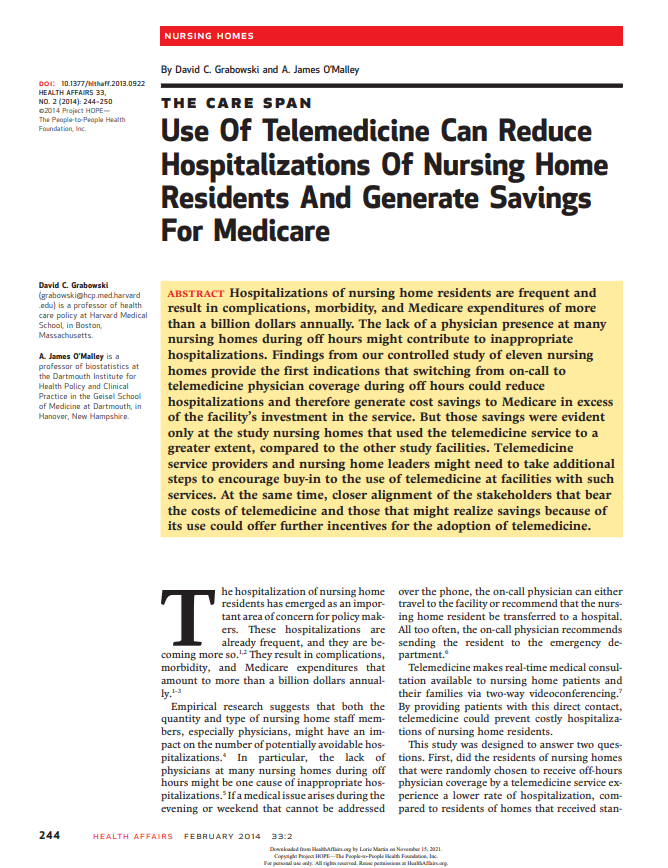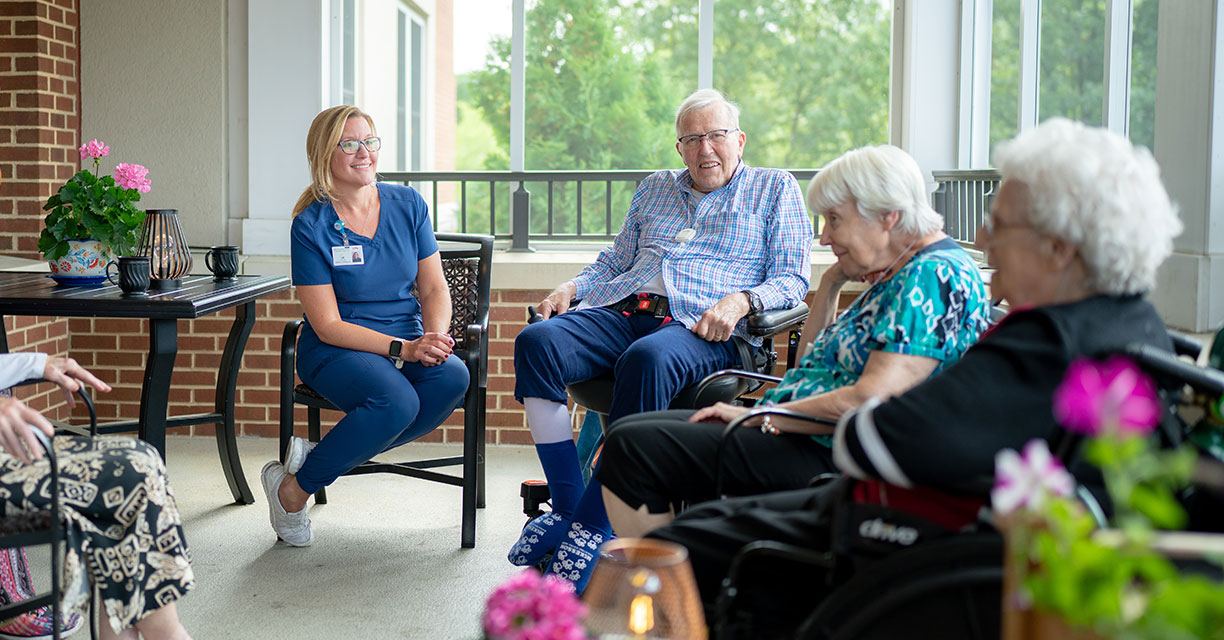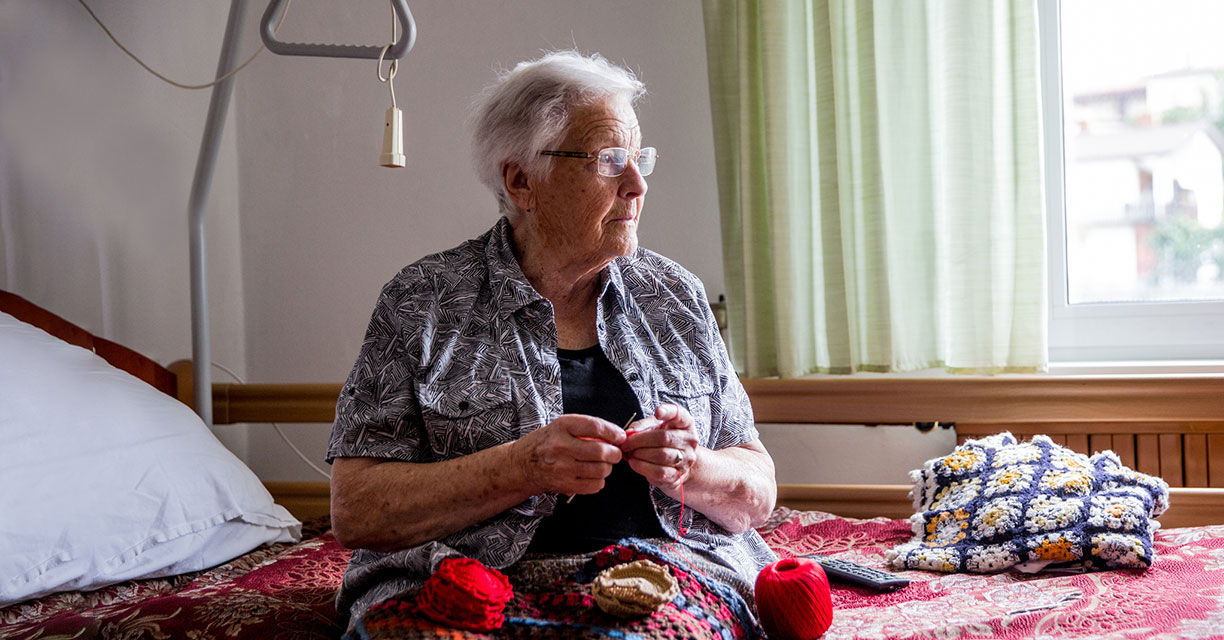Headline
In nursing homes, replacing on-call physician services during off-hours with direct contact via telemedicine may reduce Medicare spending through fewer avoidable hospitalizations.
Context
Many nursing homes have on-call physicians during evenings and weekends. When medical issues arise during these off-hours, the physician often recommends transferring the patient to the emergency department, resulting in inappropriate hospitalizations. Telemedicine offers an opportunity for real-time consultation with the physician, patient, and patient’s family. This study of eleven nursing homes in Massachusetts examined whether direct virtual contact affects hospitalization rates and Medicare costs.
Findings
Telemedicine physician coverage during off hours may reduce hospitalizations for nursing home residents and generate a return-on-investment to Medicare that exceeds the investment of the service, but only for nursing homes that were more engaged in telemedicine. More engaged facilities were defined by call volume. The average net savings for Medicare is estimated at $120,000 per nursing home per year for the more engaged nursing homes.
Takeaways
Investing in telemedicine during off-hours at nursing homes may be a viable option to reduce unnecessary hospitalizations and generate cost savings. Investments in telehealth infrastructure in nursing home settings could support long-term cost savings.




